30 Examples
of Creative
Content
Marketing
Done Right
It’s hard to be original. The B2B marketplace demands innovation, but when it comes to content marketing meeting deadlines can be counter-productive to creativity.
Many creatives might work under more pressure than they would like, finding it difficult to ‘invoke the muse’ or brainstorm ideas in tight spaces. It is understandable.
Nevertheless, creativity should be at the forefront of campaigns, with writers, marketers, and designers breaking new ground at every opportunity.
But since creativity is subjective, a tangible process for guaranteeing high-quality creative content does not exist.
In the event your business has yet to find its Michelangelo, here are 30 inspiring examples of content marketing done right.
First Steps

Find a Time and Place for Creativity
Look for Inspiration
Brainstorm First, Edit Later
Stay Informed
30 Creative Content Marketing Examples


Like web tools, a guide can become industry-standard teaching for fellow professionals on what they need to succeed.
Backlinko founder, Brian Dean, covers everything a copywriter should know, explaining topics like how to get social proof, conducting client interviews, and devising formulas for landing pages and blog posts.
Compared to others, the Backlinko guide provides actionable advice for new writers and contains examples to illustrate the points.

Find a niche. This HubSpot blog post features a scannable infographic by Resume.io specifically about cold emailing recruiters.
It outlines the steps to find a recruiter’s email, how to avoid being ignored, and advice on following up. And because of its easy-to-read format, it can be digested in less than five minutes. It’s info on the go.

Expert advice can make great content. In this example, Asana, a productivity and project management tool, features a discussion between a neuroscientist and a psychologist.
They discuss qualitative aspects of working, such as how to dissociate yourself from the ‘noise’ in your routine, why multitasking is a myth, and how to improve focus.
Asana adopts a hands-off approach, allowing the experts to instead question each other without a moderator. Expert opinion can help provide an authoritative voice on relevant issues, so try hosting discussions on your platform.
Designed to attract more job applicants for the Norwegian software company Kantega, this video is a parody of David Attenborough nature documentaries and features clichéd developer types in their natural habitat.
Recruiting talent in a competitive field such as tech can be difficult, but this sociable, approachable, embeddable multimedia content made it all look so fun.
In fact, the video went viral helping to boost traffic to Kantega job pages by 3,571%.

Entrepreneur and marketer, Neil Patel, explains how Google’s algorithms work when ranking content via his blog post.
Functioning as another resource to aid fellow B2B professionals, the blog covers website crawlers and how PageRank and RankBrain determine how relevant content is ascribed to search terms.
A blog is a great place to establish a name for yourself. In this instance providing valuable industry knowledge not only boosts website traffic, but also brand strength and relevance.

This podcast by General Electric (GE) is a throwback to Orson Welles’ reading of the War of the Worlds, and serves as an example of audio content like that provided by the GE Theatre on CBS radio.
This is highly branded content disguised as entertainment and works by way of association. In this one, GE emerges from the narrative as the saviours of Earth! After all, it was their ‘sonic health technology’ that allowed a team of scientists to decipher the alien signal.
In an interview for NiemanLab, Andy Goldberg, former Chief Creative Officer (CCO) of GE, explains his thinking behind the podcast:
'I don’t consider it advertising. It’s a podcast show that just happens to be produced by a brand instead of a network. I’m not saying, "Hey, go out and buy a jet engine." It’s a science fiction story to connect listeners with what the GE brand is about, without selling the GE brand.'
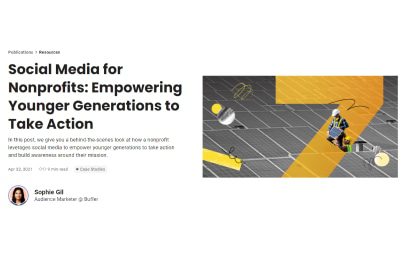
Featuring a communications specialist, this article from social media analytics platform, Buffer, works like a brand spotlight turned in on itself.
By showcasing the noble goals of clients, Buffer is in fact promoting itself by attempting to align its own values with those of its target audience. As well as plugging offers of course, in this case a 50% discount for nonprofits.

In this research piece for the SaaS online visibility and content marketing platform, Semrush, the topic of SEO is used as a vehicle to promote its new split-testing tool.
The company polled 54 SEO professionals at companies with 100+ employees to gather data on testing and the issues they face, before presenting their own tool as a solution.
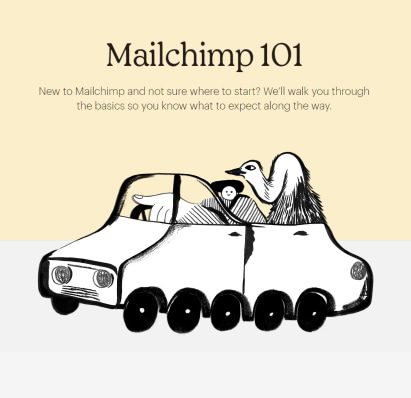
A marketing automation platform, Mailchimp has created a good-looking guide for newcomers to the world of optimised contact data.
The design here is key, with hand-drawn illustrations and an informal tone helping to onboard new clients in a calm and reassuring way, while at the same time pushing the brand.
The site also functions as a pillar page, linking to guides by Mailchimp on subjects like landing pages, email design and consumer journeys. There is nothing wrong with syndicating your own content to facilitate stronger SEO results.
As an aside, those companies that fail to formulate their own style face the ignominious fate of becoming a meme.

This guide by Hotjar, a website heatmap and analytics tool, describes key principles behind user experience (UX) design, the creation process and the differences between UX and user interface (UI).
Thanks to intelligent use of simplified language, it functions as a comprehensive asset both for UX beginners and seasoned designers who want to expand their knowledge.
Constructing a well-written and researched guide like this allows companies to plug other content too, in this case signing up to Hotjar’s insights mailing list.

The software community Mozilla is perhaps best known for its internet browser Firefox. In this article, it explains what cookies are and how they track browsing activity, before presenting its own services as a solution in much the same way Semrush did.
The quality of information from articles which come straight from the horse’s mouth, as it were, is generally very high, well regarded and in some cases can work to inform changes to company policy. Content like this helps maintain industry relevance.

Each week, the Harvard Business Review (HBR) interviews an industry leader on a pressing topic, such as stakeholder capitalism, how to foster imagination or even the fall of Carlos Ghosn.
It utilises the podcast format well to craft compelling stories instead of lecturing listeners. As such, more discerning audiences tend to be loyal, valuing the quality of the content as a staple in their learning calendar.

In this personable video presentation, Google introduces a dedicated platform developed for the agricultural technology (Agtech) industry that allows farmers to better track all aspects of their business.
Instead of a hard sell, the video reflects on changing working practices, incorporating the Covid-19 pandemic, and showcasing those people at the forefront of the industry.
Not really an advert, it’s more a miniature case study into their own success, tying digital operations to their practical application in the physical world. And it screams one thing: relevance.

As we have already discussed, do not be afraid to be niche. This article/case study by tech giant Lenovo unashamedly focuses entire tranches of the tech sector through the narrow lens of motorbike racing.
But it also does more; it tells a story. A history. And before we know it Lenovo has been integral to the development of one of the most popular motorsports on the planet over the past 70 years.
This type of content helps develop an already established brand name further, adding prestige by identifying their own place in the annals of history. And not an SDR in sight.
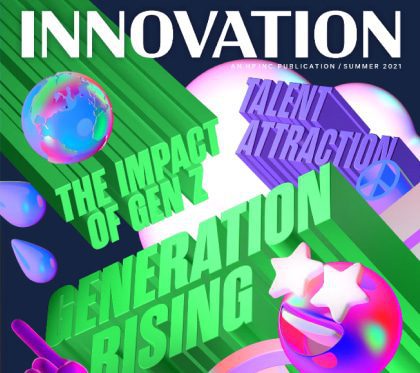
A digital quarterly magazine published by HP, this content is about as high quality as it gets and features well-written and designed articles with industry movers and shakers.
The digital style allows images to come to life while still retaining the historical quality of a hard copy magazine. If it wasn’t obvious, to create this type of content requires no little money, time, and talent.

Reading like a recruitment drive, this article by Cisco features an employee before and after joining the company.
Written by the employee themselves, the piece is a kind of social proof designed to showcase the modern working practices employed by Cisco, and the type of talented young person it attracts.
Sharing similar objectives to the Kantega short (pt. 5), this approach differs in that it takes itself seriously. Which can make it vulnerable to parody.

In this short guide, COMCAST reviews the steps small businesses need to take to better organise a remote workforce.
With easily scannable segments and engaging infographics, this content is designed to be picked over and functions as another example of info-on-the-go for the busy professional, with links to PDFs for further reading.
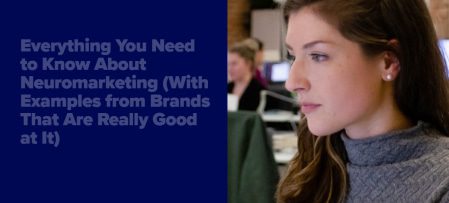
This report prides itself on its intellectual rigour and is designed to inform fellow marketing professionals. It is a classic example of B2B thought leadership. It uses videos and images alongside the text to effectively show how neuromarketing works, instead of just telling.

Another example of blog content designed to inform and build brand awareness. This example by Shopify is all about breaking down a complex principle into more manageable and consumable info bites.
This is compounded through the inclusion of multimedia to cover all bases with the target audience. After all, not everyone learns in the same way.

In this blog, Cybersecurity firm, Splunk, attempts to place itself firmly within the zeitgeist by comparing tech performances with those of Olympic athletes.
With the Tokyo Olympics underway (at the time of writing of this article), this type of creative content harks back to the points made earlier in this guide where we spoke about staying informed.

A form of self-promotion designed to increase brand awareness and relevance within a fast-paced business environment, this long-form blog post by VMware pins its objectives onto the backs of employees, who feature heavily.
Not only does this article reveal a personable side to the company, presumably with the intention of increasing applicants for job roles, it also allows the embedment of other VMware projects like its Take3 nonprofit program. A kind of one-stop shop to showcase brand activity.

Just like Splunk above (pt. 22), informed low-code app platform, Quickbase, utilises global headlines about product shortages to frame an article on digital experience tools.
And just like Semrush (pt. 9), the tactic here is to identify common problems before presenting their own platform as a solution, in an indirect way. This type of content would feature in the MOFU stage of the consumer journey.

Datacenter provider, CoreSite, created this infographic-based content to explain the pros and cons of maintaining company data, either in-house or outsourced.
By using a classic good vs evil dichotomy through which to present core service information in a fun way, this is a great example of creative content done right. It is informative, scannable, shareable and easy to understand at a glance.
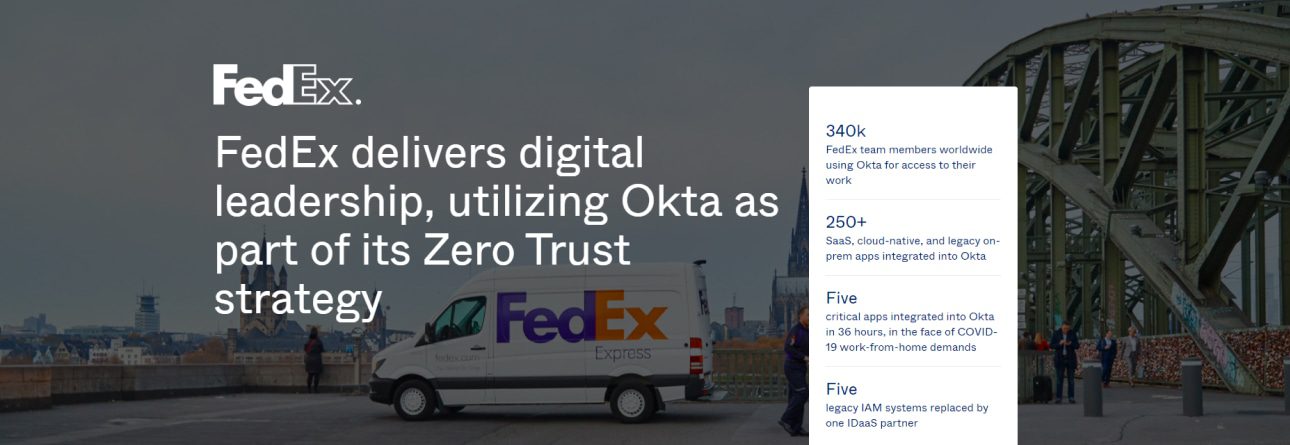
A global courier service, with thousands of employees and clients, relying on legacy software for its identity verification— that’s a recipe for unproductivity.
And to tackle that, Okta integrated in under 36 hours FedEx’s digital apps to Okta’s Zero Trust Security, so team members could safely access Workday, Office 365, Salesforce, and Zoom without typing so many passwords.
In this case study, Okta brilliantly considered the solutions and the 10 reasons why FedEx chose its identity management solution.

What do you interpret from ‘Oracle Cloud Infrastructure Anomaly Detection Service’?
To make sense of this word soup, Oracle presents a scenario with robots preventing a life-threatening inferno in a warehouse. The robots detect vapour levels and record videos to assess fire risk.
Based on the collected data, the system can automatically request a dispatch to the location.
By exploring this hypothetical scenario, Oracle makes complex tech understandable to anyone. And the writer concludes the article by mentioning the other uses for this technology, such as saving energy at a power plant by predicting consumption levels.

Harkening back to our first example on the list (Hootsuite), Palo Alto Networks created this comprehensive glossary on all things cybersecurity.
Cybersecurity is a niche with heavy jargon, so providing a ‘cyberpedia’ is a great asset for Palo Alto Networks whenever they mention a term in a blog post, eBook, or email.
Also, it’s perfect for brand awareness ads on LinkedIn.
Three characters in a lobby, attacking an organisation. They are ‘Advanced System Threats’, ‘Supply Chain Compromise’, and ‘Ransomware’—all played by talented actors.
Similar to Kantega on this list (pt. 5), Extrahop illustrates the threats of a business network in a humorous video. And there’s even a backstory video for each character, which can be viewed on their homepage.

A Yale professor comments her research on work and friendship in this Q&A with Microsoft. The article discusses how the pandemic frayed the ties between work acquaintances, while strengthening bonds with close work friends.
The conversation starts with the new Together Mode in Microsoft Teams, which replicates the ‘conviviality of gathering in person’ in video meetings. Then it proceeds to an interview, which reads as journalistic rather than content marketing.
Thus, in this article Microsoft showcases its values of marrying the humane side with tech, while still promoting a product.
Conclusion
To round up, let’s review a few of the fundamentals that can be gleaned from these examples:
Fun
Creativity should be fun. For any creatives struggling to get going, think of the most fun and entertaining way to present your information and start from there. The award-winning GE radio show, for example, would have appealed to people with no interest in the product, yet still promoted the brand. And don’t be afraid to use humour, the truest words are often spoken in jest.















Create a tool for others to use. The social media management platform, Hootsuite, has compiled a glossary of industry jargon for the uninitiated and expert alike.
This type of ‘evergreen’ content is time-consuming to make, demanding many hours to research and write, but can propel
a brand to the pinnacle of its industry as it demonstrates knowledge and relevance.
After all, yours is the valuable resource upon which others have come to rely. Not to mention a popular tool will generate
high levels of SEO hits.